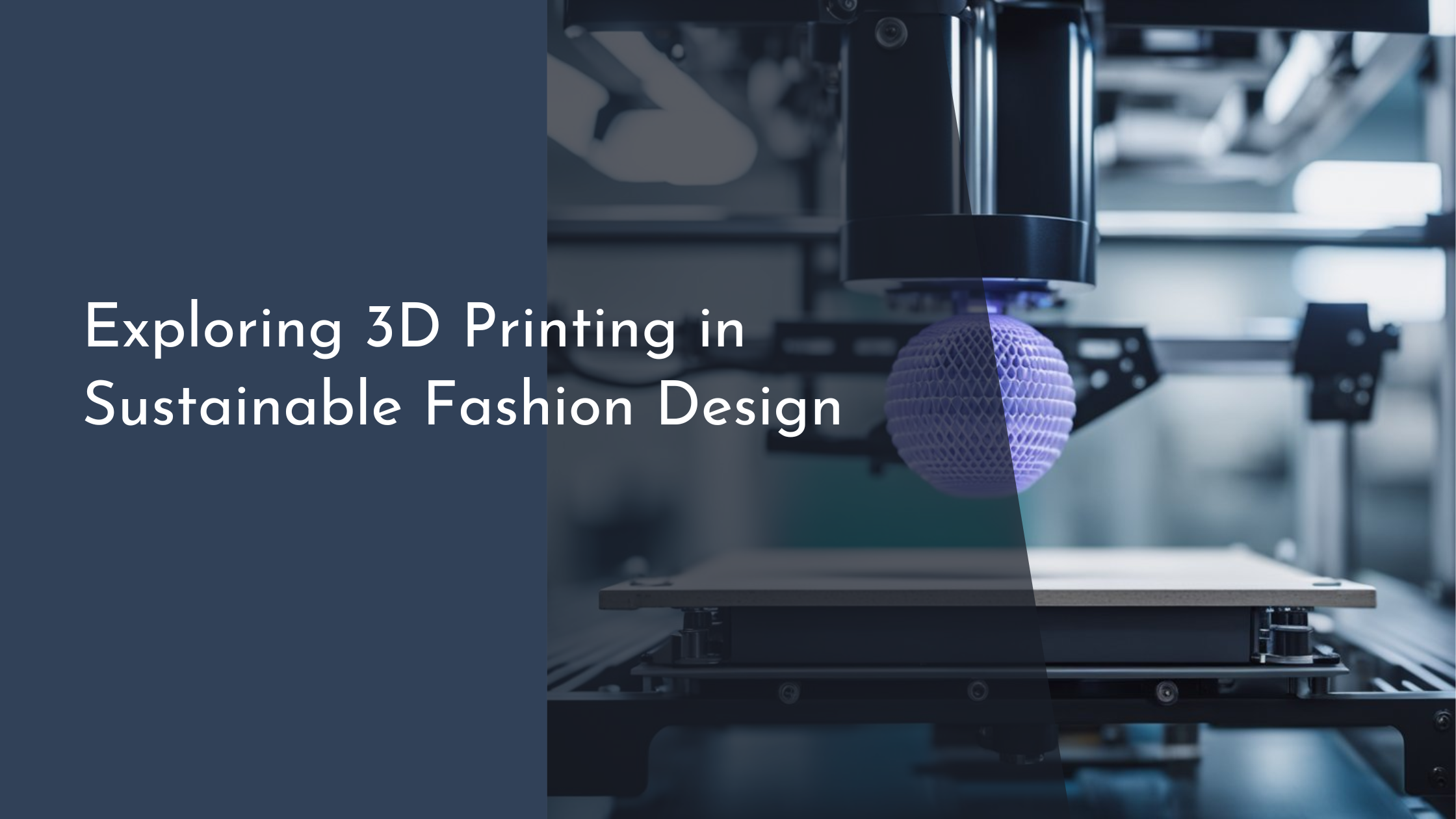Exploring 3D Printing in Sustainable Fashion Design
In recent years, the fashion industry has been undergoing a transformative shift towards sustainability, driven by the urgent need to reduce environmental impact and embrace more ethical practices. One of the most exciting developments in this arena is the integration of 3D printing technology into fashion design. This innovative approach not only opens up new creative possibilities but also holds the promise of a more sustainable future for fashion. In this article, we’ll delve into how 3D printing is reshaping sustainable fashion design, explore the innovations driving this change, and look at the eco-friendly materials that are revolutionizing the industry.
Understanding 3D Printing in Fashion
3D printing, also known as additive manufacturing, is a process where materials are layered to create three-dimensional objects from digital designs. In the context of fashion, this technology allows designers to print complex structures and intricate patterns that were previously impossible to achieve with traditional methods. From avant-garde dresses to bespoke accessories, 3D printing is enabling a new wave of creativity in fashion design. By eliminating the need for multiple prototypes and reducing material waste, 3D printing offers a more efficient and environmentally friendly production process.
Moreover, 3D printing in fashion offers the ability to create customized, made-to-order pieces that perfectly fit the customer’s measurements, reducing the fabric waste associated with mass production. This customization can extend to the aesthetics of the garment, allowing for unique designs tailored to individual preferences. Designers can quickly iterate and experiment with new ideas without the constraints of traditional manufacturing, leading to more innovative and sustainable fashion solutions.
Innovations Driving Sustainable Design
The fashion industry has embraced 3D printing technology not only for its creative potential but also for its ability to drive sustainability. Designers are now experimenting with the concept of ‘zero-waste fashion,’ where garments are created with minimal or no waste generated in the manufacturing process. By using 3D printing, designers can accurately calculate the amount of material needed, significantly reducing excess and offcuts that typically end up in landfills.
Furthermore, 3D printing is facilitating the development of modular fashion designs. These are garments made from interchangeable components that can be easily assembled, disassembled, and reconfigured. This modularity not only extends the life cycle of clothing but also reduces the carbon footprint by encouraging consumers to update their wardrobe through swapping parts rather than buying entirely new garments. The ability to effortlessly repair or upgrade these pieces contributes to a circular fashion economy, aligning perfectly with sustainable principles.
Materials Revolution: Eco-friendly Filaments
The choice of materials is a critical aspect of sustainable fashion, and 3D printing is at the forefront of the materials revolution. One of the most promising developments is the creation of eco-friendly filaments made from renewable sources. For instance, designers are increasingly using biodegradable materials such as PLA (polylactic acid), derived from corn starch or sugarcane. These materials not only reduce reliance on fossil fuels but also ensure that the end products are biodegradable, minimizing environmental impact.
In addition to biodegradable options, there has been significant progress in recycling post-consumer plastics into filaments suitable for 3D printing. This innovation helps tackle the problem of plastic waste by repurposing it into new, durable fashion items. These recycled filaments can be infused with various natural fibers, such as bamboo or hemp, to enhance their aesthetic appeal and structural integrity, offering designers an expanded palette of sustainable options to work with.
Embracing the Future: A Greener Wardrobe
As 3D printing continues to evolve, so too does its potential to foster a greener wardrobe. The technology provides the unique opportunity to produce clothing on demand, reducing overproduction, and subsequently, fashion waste. Brands can carry digital inventories and print products only when needed, aligning production with demand and drastically cutting down on unsold stock and markdowns.
The future of fashion is also leaning towards a more transparent and ethical production model, and 3D printing can play a pivotal role in this evolution. By localizing production and reducing supply chain complexities, 3D printing allows for more traceable and accountable manufacturing processes. This shift not only benefits the environment but also supports fair labor practices and strengthens local economies, ultimately contributing to a more sustainable and ethical fashion ecosystem.
The integration of 3D printing into sustainable fashion design marks a significant step forward for an industry often criticized for its environmental impact. By harnessing the power of this technology, designers can create innovative, customized, and eco-friendly garments that align with the growing demand for sustainability. As we continue to explore the possibilities of 3D printing, the fashion industry stands on the cusp of a new era, where creativity meets responsibility, paving the way for a greener wardrobe and a more sustainable future.

